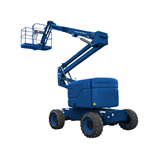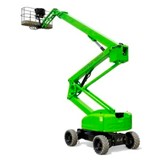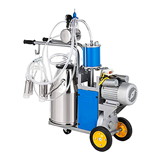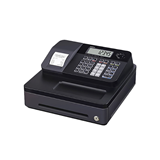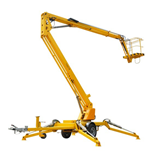The Australian dairy manufacturing industry produces cheese, milk powder, butter and other dairy products for a largely domestic market. Dairy manufacturers are forecast to generate revenue of $11.5 billion in 2013-14.
With domestic demand growing mainly in line with population growth, manufacturers have struggled to increase revenue through product innovation in the past five years. The poor weather conditions of the past decade have also affected the industry, with reduced returns limiting investment incentives.
While dairy manufacturers have long structured their operations to supply a mature domestic market, the industry is entering a period of transition as export markets grow. Over the past 12 months alone, declines in global production compared with consumption have resulted in appreciation in the world price of dairy. IBISWorld forecasts Australian dairy product export revenue will grow at an annualised 5.2 per cent over the five years through 2018-19, driven largely by growth in Asia-Pacific markets.
Domestic and international players are fighting to position themselves to supply these export markets with Australian dairy products, and this trend has come to a head in the current bidding war over Warrnambool Cheese and Butter (WCB).
In WCB, bidders see the potential to increase industry revenue through research and development, capital investment in domestic production and improved export strategies.
Acquisitions have been a consistent theme in the domestic dairy industry over the past five years, as players have sought to improve productivity by gaining economies of scale. However, new export markets are expected to change the face of the domestic industry.
Export opportunities
Over the next five years, China is expected to firmly establish itself as one of the largest export markets for the Australian dairy industry. The wave of modernisation in China means millions of Chinese are becoming middle class and are moving towards Western dietary patterns. The surge in dairy demand is largely due to higher levels of income and the growing acceptance of dairy as a staple in the Chinese diet.
The burgeoning growth of China's middle class poses the opportunity to tap into a demographic that is estimated at 500 million people. At the moment, China represents the largest opportunity for milk powder manufacturers, as a major importer of skim and whole milk powders globally.
Continuing growth in demand for dairy products in countries such as Japan and Singapore will remain crucial for the industry. This is particularly relevant for cheese manufacturers: close to one- quarter of cheese manufactured in Australia is destined for Japan. Key export markets are expected to remain stable over the next two to three years.
Japan and China represent the two largest markets for Australian dairy exports, followed by Singapore, Indonesia, Malaysia and Thailand.
The Australian industry has a strong chance of meeting this growth.
Australia's strong reputation for high-end primary produce is expected to help the industry develop markets in the Asia- Pacific region. Australia's milk is internationally perceived as high quality. Further, the high food safety standards enforced in domestic manufacturing help Australia's export competitiveness.
Scandals surrounding Chinese milk powder manufacturers, which began in 2008, accelerated Chinese demand for Australian milk powders. Australia's position was further enhanced when Chinese food regulators identified disease-causing bacteria in milk powder exported by competing New Zealand company Fonterra.
Fonterra has benefited from the New Zealand Free Trade Agreement with China, which commenced in 2008.
Should Australia reach a similar agreement, the effect on exports would likely be immediate. For now, regardless of the existence of such an agreement, Australian dairy manufacturers find themselves in an enviable position of proximity to a booming market that is steadily gaining a taste for Australian dairy, and increasingly has the means to acquire it.
Growth challenges
Australia's dairy manufacturing industry will require significant investment and a refined export strategy if it hopes to be competitive in global markets. Potential export growth signals the productivity gains that could be made through further capital investment in dairy and production infrastructure. Additional capital investment will also be required to develop transport networks that support the export of these often temperature-sensitive products.
Industry operators will need to invest in research and development to reach global markets. Markets in the Asia- Pacific region are growing, but their demand and taste preferences are different to those of the domestic Australian market. Expenditure on market research and product development will be an important revenue engine over the next five years.
The short shelf life of some dairy products, such as butter and yoghurt, is a significant barrier to trade. Dairy products continue to be highly sensitive to transportation, especially on long-haul travels. Further research and development will be required to address these issues.
Bidding war
The realisation that the Australian dairy manufacturing industry has the potential to meet growing world demand for dairy has resulted in a fierce bidding war for WCB. The leading bidder is Saputo, which is based in Canada. Japan-based Lion has also shown an interest, acquiring a 9.9 per cent stake in the business.
WCB has led the way for product innovation and export growth within the industry over the past decade. As a result, the 125-year-old company's revenue is estimated to have increased at an annualised 7.6 per cent over the 10 years through 2013-14, which is an outperformance of the industry. WCB exports to almost 50 countries – with the strongest presence in Japan, the Middle East and China – and was awarded the Victorian Regional Exporter of the Year in 2012.
The company is well placed within the domestic supply chain and has strong relationships with the dairy farming industry. It has invested in capital to manufacture whey protein concentrate and cheese, and has also expanded through joint ventures including partnerships with Kraft and FrieslandCampina to manufacture cheese and infant formula ingredients. The company is therefore an attractive prospect for domestic companies looking to buy export know-how and for international companies looking to expand capacity.
A strong future
The flurry of interest in WCB marks a period of transition in the domestic dairy manufacturing industry. The potential rewards for industry participants and prospective entrants to the industry are increasing, and domestic and international players will continue to fight to supply export markets with Australian dairy products. WCB's strategic planning, strong capacity and proximity to Asian export markets, combined with an increase in demand for dairy products from a growing Asian middle class, make it an attractive acquisition.
The winner of this bidding war will be well placed to capture growing opportunities abroad, as well as boost their domestic presence within the Australian industry.



